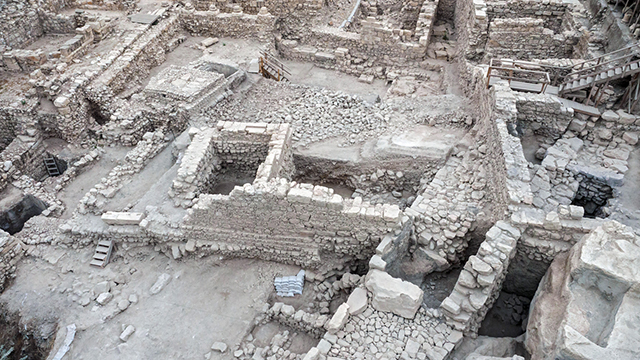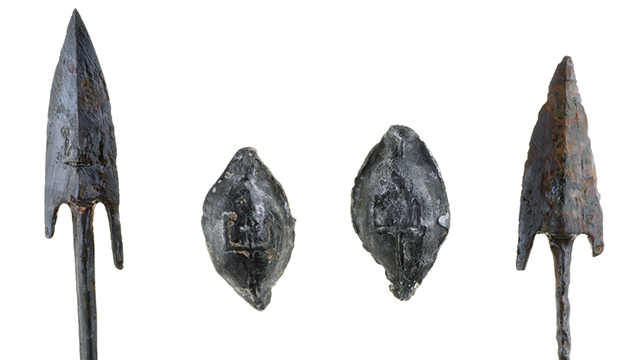
Ancient Greek fortress found in Jerusalem's City of David
Antiochus' mysterious Acra, sought by archeologists for over one hundred years, discovered by archeologists from Israel Antiquities Authority; lead sling stones, bronze arrowheads and stone catapults constitute evidence of fierce battles waged there during the Maccabean uprising.
This is one of the most important archeological discoveries of recent years in Jerusalem. It highlights the question of the location of the Greek Acra, the famous fortress built by Antiochus from which he was able to oversee Jerusalem and the Temple.
The Givati parking lot belongs to the national park surrounding Jerusalem's walls. Researchers and archaeologists have been searching for the location of the Acra, mentioned in the books of the Maccabees and historian Josephus Flavius' writings, for over a hundred years. The source of the uncertainty lies in the paucity of architectural remains that can be traced to the presence of the Greeks in Jerusalem.

In recent months evidence of the remains of the fortress was uncovered at the City of David: a section of a massive wall, the basis of a tower with large dimensions (four meters wide and 20 meters long) and a sloping defensive element, called Halaklaka (slippery in Hebrew), which was built next to the wall and made from layers of earth, stone and plaster designed to keep attackers from the base of the wall. The slope goes all the way down to the Tyropoeon Valley, which crossed the city in ancient times, which constituted another obstacle in order to defend the fortress.
Also found at the site were lead sling stones, bronze arrowheads and stone catapults, which are evidence of the fierce battles waged there during the time of the Hasmoneans, who tried to capture the fortress. According to ancient sources, the people of Jerusalem suffered greatly from the inhabitants of the Acra that housed military personnel and Jewish Hellenists. The strong fortification system withstood all attempts at conquest and only in 141 BCE, after a long siege and the starvation of the Greek garrison, was Simon the Hasmonean able to vanquish them.

This discovery allows for the first time a reconstruction of the settlement and the appearance of the city on the eve of the Maccabean uprising.
"The new archaeological finds indicate the establishment of a well-fortified stronghold that was constructed on the high bedrock cliff overlooking the steep slopes of the City of David hill,” according to a statement from archaeologists Dr. Doron Ben-Ami, Yana Tchekhanovets and Salome Cohen, directors of the excavation on behalf of the Israel Antiquities Authority.
"This stronghold controlled all means of approach to the Temple atop the Temple Mount, and cut the Temple off from the southern parts of the city. The numerous coins from the days of Antiochus IV until the days of Antiochus VII, and the large number of wine jars imported from west of Jerusalem discovered at the site provide evidence of a time when people lived at the fortress, and show that its inhabitants were foreigners."
The fortress excavations that began at the City of David National Park a decade ago are financed by the City of David Foundation.










